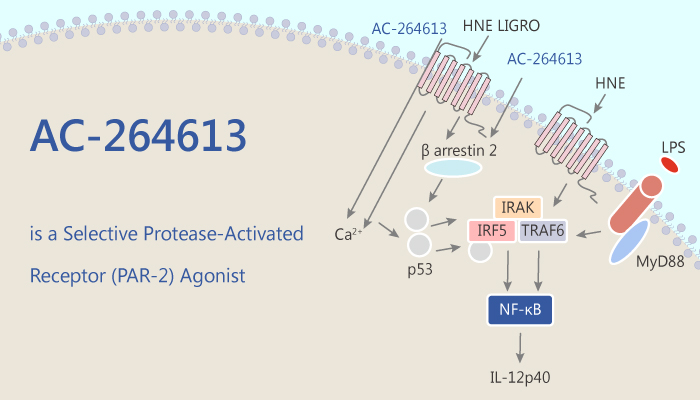Proteinase activated receptor-2 (PAR-2) plays a crucial role in a wide variety of conditions with a strong inflammatory component. PAR-2 is an attractive target for drug discovery. Physiologically, PAR-2 receptors play a critical role in mediating nociceptive and inflammatory responses. Therefore, compounds that target PAR-2 have the potential to treat a wide variety of disorders. Currently, PAR-2 antagonists are of particular interest due to their potential for relieving inflammatory symptoms in rheumatoid arthritis. Paradoxically, PAR-2 agonists may also have therapeutic value. PAR-2 agonists may have a therapeutic role as gastric cytoprotective agents or as mediators of airway smooth muscle relaxation. The development of small-molecule ligands that selectively target PAR-2 will help the full assessment of PAR-2 receptors as therapeutic targets.
PAR-2 receptors belong to a subfamily of four G-protein coupled receptors (PAR-1, PAR-2, PAR-3, and PAR-4). In this study, researchers present the discovery and characterization of AC-264613. AC-264613 is a potent, selective, and metabolically stable small-molecule PAR-2 agonist. Incubation of macrophages with a PAR-2 agonist, AC-264613, causes a decrease of IRF5 expression and also significantly reduces p53 protein expression. The PAR-2 agonist AC-264613 attenuates IRF5- associated IL-12p40 production by macrophages.

AC-264613 also significantly reduces p53 protein levels in GM-CSF-dependent macrophages. Pretreatment of macrophages with AC-264613 significantly attenuates IL-12p40 production after stimulation with LPS. Interestingly, AC-264613 causes an increase of IL-12-p40 protein. AC-264613 activates PAR2 signaling in cellular proliferation assays, phosphatidylinositol hydrolysis assays, and Ca2+ mobilization assays, with potency ranging from 30 to 100 nM for AC-264613.
In conclusion, AC-264613 is a potent and selective small-molecule PAR-2 agonist.